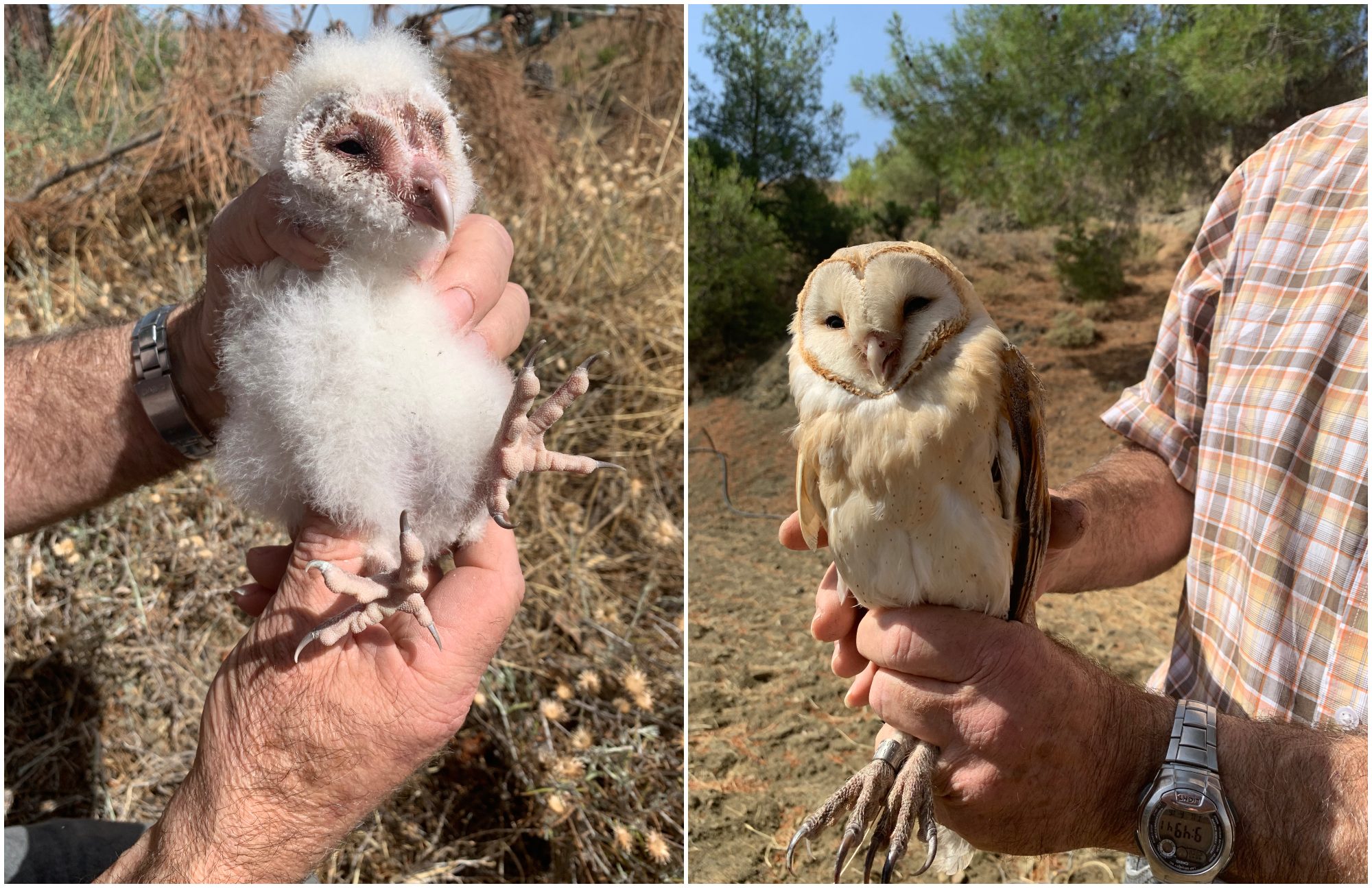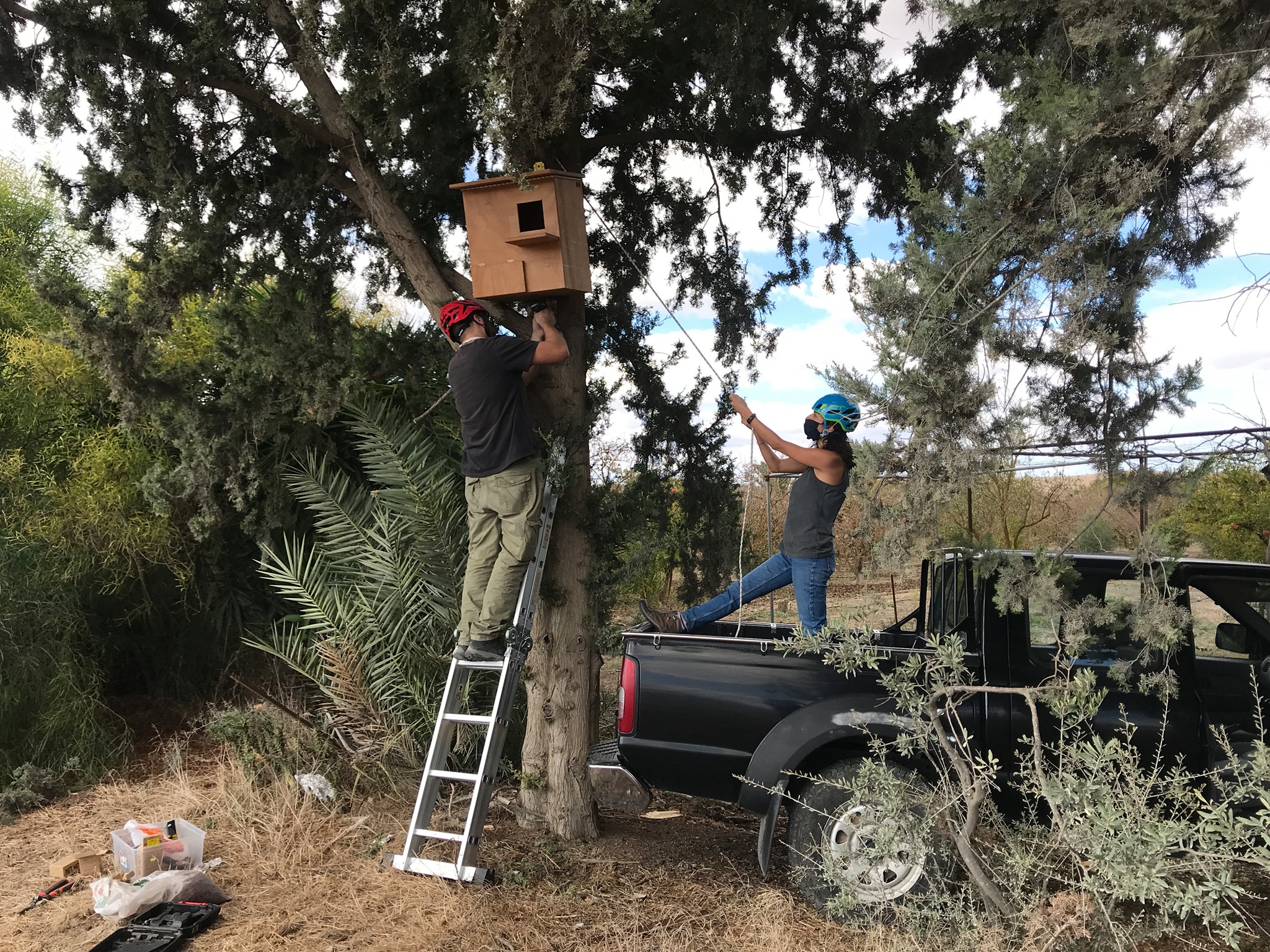- Projects
Barn Owl Project
What is a Barn Owl?
The Barn Owl Tyto alba is one of the six owl species found in Cyprus. Its white face and overall plumage, with gold-brown markings make it stand out in comparison to the other Cyprus owls. It is strictly nocturnal and has excellent night vision, amazing hearing and silent flight. These features make the Barn Owl the perfect rodent predator.
Studies on Barn Owl diet show that they feed almost exclusively on rodents, with 96% of their diet comprised of rodents like rats, mice and shrews. As a result, a single Barn Owl can catch and eat up to 1000 rodents per year. During the breeding season, Barn Owls mainly hunt within a short 1 km radius around their nest, sometimes ranging up to 4.5 km away.
The rodenticide problem
Rodenticides are currently used very extensively in Cyprus (around 300 tons of Bromadiolone (0.25%), a potent 2nd generation anti-coagulant rodenticide, are used annually in the countryside). These are distributed at a subsidized price to local communities who then distribute them to farmers to control rodents that often cause damages to trees and crops. The use of rodenticides in the countryside puts biodiversity in danger, and especially birds like the Barn Owl, which feed predominantly on rodents. Birds and other animals that feed on rodents are at risk of dying from secondary poisoning, which occurs when an animal (like a Barn Owl) eats a poisoned rodent.
The Barn Owl project
The Barn Owl project aims to encourage the use of the Barn Owl as a biological control of rodent populations in farmland areas, with the aim of reducing the use of rodenticides.
Our work with Barn Owls started back in 2015, when we received funding from the Tasso Leventis Conservation Foundation. In collaboration with farmers and farming communities, we began installing Barn Owl nest boxes around Cyprus in an effort to reduce the use of rodenticides in the countryside and encourage the Barn Owl as a biological method for controlling rodent populations. Since then, we have installed 64 Barn Owl nest boxes across Cyprus. Adding this to the number of nest boxes installed by the Game and Fauna Service, the Department of Forests and the Department of Agriculture, brings the total number of nest boxes installed to over 1,124.
In addition to installing nest boxes in selected areas, relevant workshops also take place to provide information to farmers, communities, schools as well as relevant authorities.
Another important element of the project is to carry out research to study other aspects of the Barn Owl’s biology and their impact on rodents.

A national working group
Encouraging Barn Owls as a biological rodent control is a method widely used in other countries. In Israel, this method has been successfully used since the 80s, reducing rodenticide use by 80% since 2006. Today, Israel has more than 4,500 nest boxes installed around the country.
The successful example of Israel paved the way for Cyprus to take this effort even further, by developing its own National Action Plan for the Barn Owl.
Partnering up with the Game and Fauna Service, the Department of Forests, the Department of Agriculture and the Veterinary Services, we formed a national working group and drafted a National Action Plan for the Barn Owl, which was presented to the Minister of Agriculture, Dr. Kadis, in early June 2020. The Minister has given his backing to a National Plan that describes the actions that needs to be taken to roll out the nest box scheme on a national level. The draft plan covers actions to enhance work on research, education, reduction of rodenticide use, and the creation of an agri-environment scheme that will further promote the use of the Barn Owl nest box scheme by farmers. Under such a scheme, an interested farmer looking to reduce rodenticide use, could receive nest boxes as well as guidance and support on placement, and be compensated for reduced yields due to rodent damage, which he or she will sustain in the interval between the installation of the nest box and the occupation of it by a Barn Owl pair.





